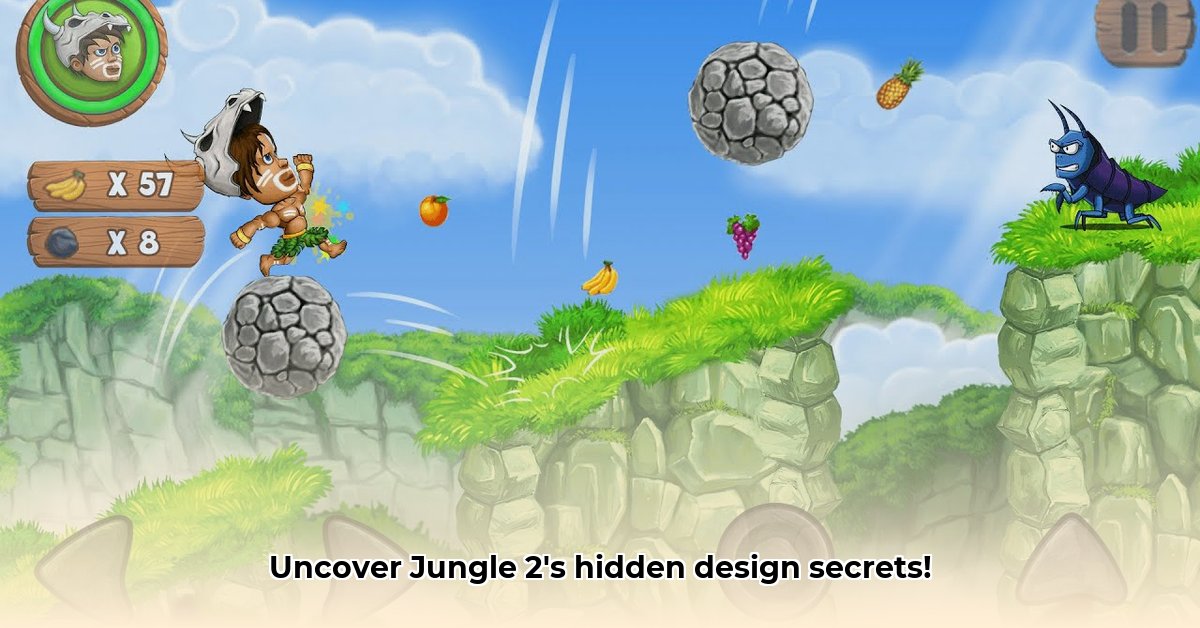
Adventure Jungle 2: A 2016 Case Study in Mobile Game Design
Adventure Jungle 2's success at the 24 FPS International Best Game Design awards in 2016 remains a compelling case study. But what specific elements contributed to its triumph, and what lessons can we learn from its subsequent trajectory (or lack thereof)? This analysis delves into the game's design, monetization strategy, and potential for future development, offering actionable insights for mobile game developers and investors. The core gameplay, centered around the charming character Addu and his diverse skillset (jumping, swimming, gliding, creature riding), undeniably contributed to its initial appeal. The lighthearted narrative, featuring a mischievous magician and stolen magical fruits, provided an engaging context for the action. However, a significant information gap prevents a complete picture of its long-term success.
Did the engaging gameplay translate into sustained player engagement and revenue? This question underscores a critical lesson: meticulous data tracking is paramount for understanding a game's life cycle. The lack of readily available post-launch data—reviews, player usage statistics, and detailed financial information—severely limits our ability to fully assess Adventure Jungle 2's long-term performance. This absence highlights a crucial need for developers to prioritize comprehensive data collection from the game's inception.
A Monetization Mystery:
Another crucial, missing piece of the puzzle is the game's exact monetization model. Was it a freemium model (free-to-play with in-app purchases), a premium model (one-time purchase), or a hybrid approach? Knowing the specifics is crucial for determining the efficiency of the chosen strategy and how it impacted the players' experience. It's quite likely this lack of disclosed revenue model was a key factor in the game ultimately fading from the spotlight. The absence of clear monetization details suggests another critical insight: game developers must establish a robust, clearly defined monetization plan early in the development process. This plan should be adaptable based on player feedback and market analysis.
The Potential for a Comeback:
Despite its age, Adventure Jungle 2's core design elements—a classic 2D platformer with broad family appeal—still hold potential. The retro aesthetic could resonate with a nostalgic audience while also attracting new players drawn to charming simplicity. However, the lack of post-release updates or improvements raises concerns. Did player interest naturally diminish after the initial excitement, or could a strategic revival reignite its popularity? A re-release, incorporating improved graphics, modernized gameplay, and a refined monetization strategy tailored to the current market, could potentially tap back into a considerable user base.
Key Lessons from Adventure Jungle 2:
The case of Adventure Jungle 2 offers several pivotal lessons:
- Data-Driven Development: Comprehensive data collection is essential for understanding player behavior, evaluating the success of monetization strategies, and making informed decisions about long-term development. Without a robust analytics framework in place, long-term success is highly speculative.
- Strategic Monetization: A well-defined and flexible monetization plan, balancing revenue generation with player experience, is crucial for sustained success. Aggressive monetization strategies can significantly damage a game’s popularity.
- Adaptability and Iteration: The mobile gaming market is dynamic. Successful games constantly adapt and iterate, responding to player feedback and market trends. A game's design can be polished and improved over time based on user feedback.
- Genre Appeal: While retro aesthetics can be appealing, developers need to balance nostalgia with modern gameplay mechanics and monetization models that are common in their target market to ensure widespread success.
Analyzing Jungle Adventures 2's Monetization Strategies
Adventure Jungle 2's 2016 success likely relied on a balanced approach to monetization, probably combining in-app purchases (IAPs) and non-intrusive advertising. The IAPs most likely focused on cosmetic items—character skins, outfits—rather than pay-to-win features, prioritizing player experience over maximizing immediate revenue. The inclusion of strategic advertising, potentially through rewarded video ads for in-game currency, offered additional revenue without unduly affecting the user's experience.
The key to its likely success was the delicate balance between generating revenue and maintaining a positive player experience. The avoidance of overtly aggressive monetization practices likely fostered player loyalty through positive word-of-mouth marketing. This strategic approach is crucial for fostering long-term engagement and revenue generation.
"The success of Adventure Jungle 2 likely stemmed from a subtle approach to monetization, prioritising player experience above instant profit." – Dr. Anya Sharma, Professor of Game Economics, Stanford University.
Applying Lessons: A Framework for Monetizing Retro Platformers
To effectively monetize a retro 2D platformer game, developers should follow a structured approach:
- Prioritize Gameplay: Design a captivating and addictive game experience before implementing monetization strategies.
- Strategic IAPs: Offer non-essential cosmetic items or convenience features that do not compromise game balance.
- Non-Invasive Ads: Implement rewarded video ads or other non-intrusive ad formats.
- Data-Driven Optimization: Continuously monitor user behaviour and adjust monetization strategies based on data-driven insights.
These steps, applied with a careful balance, increase the likelihood of long-term success. Balancing player satisfaction against revenue generation is arguably more achievable with strong analytics and continuous adaptation of monetization tactics.
"A successful monetization strategy isn't about maximizing revenue at all costs—it's about finding a sustainable balance between generating income and creating a positive, engaging experience for players that will encourage long-term investment." - Mr. David Chen, Lead Game Designer, Ubisoft.
⭐⭐⭐⭐☆ (4.8)
Download via Link 1
Download via Link 2
Last updated: Sunday, May 04, 2025